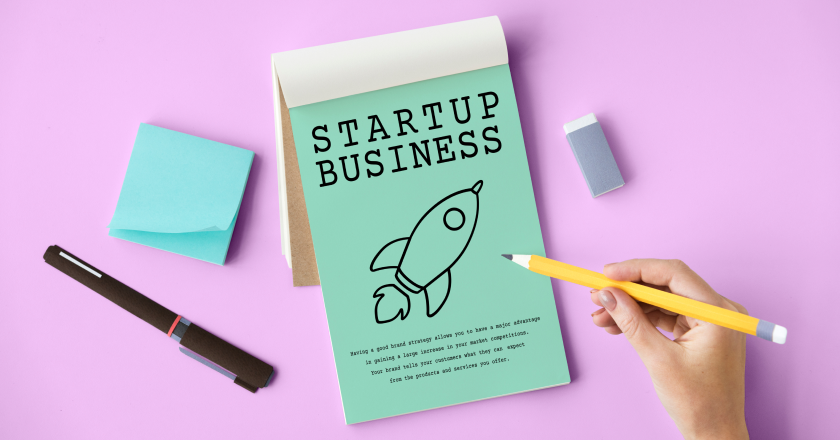
As CB Insights 2021 report suggests, among the overall list of reasons why businesses go down, misunderstanding market demand is cited as the primary cause of startups failing in 35% of cases.
Forewarned is forearmed: young businesses need to conduct market validation for future product - first and foremost because it lets them know their product is in demand and the venture will encounter financial success. Usually, such a process is done by testing the project idea and creating an MVP.
In this article, we will talk about validation of future product, why it matters, how to test product idea. Also, you’ll learn common mistakes startups make in the early stages.
What is Product Validation, and Why is Product Idea Validation Important?
Product validation is the process of evaluating the viability of your idea with actual customers. It allows not to waste time and resources designing products that won’t have demand on the market by validating them before release.
Here are the reasons why you need product validation.
Understand the market
The worst thing you can do is invest your efforts in creating a product based on mere suggestions of what customers want or need. Don’t bet the success of your endeavor on guesswork. Instead, take the time to comprehend the consumers' habits, difficulties, and methods for problem-solving, whether through customer discovery interviews or surveys. Before creating the kind of product that will relieve it, you must genuinely comprehend the pains of your potential consumers.
Reduce the risk of losing resources
You need to initially talk to clients and go through the validation process to avoid losing money while still going a mile. Young businesses don’t usually possess an extensive budget. Thus, it’s vital to remember that product validation before creative kick-off lowers your financial risk. When the building process has finally started, it is easier to decide where to invest more of your resources.
Enhance the product and make it more attractive for clients
To validate a concept, you must ensure there is a demand for it. There is a strong probability that your product validation will prove otherwise. That’s exactly why you should do it. You may improve your product and make it more suitable for your target audience by using the information you get.
Key Stages of Market Validation
To understand whether your product idea is viable, it’s necessary to go through four product validation steps.
Form the hypothesis
However great your idea seems, in business, it necessarily has to be proven by data and facts. It matters since the market hasn't validated your idea yet. The best thing you can do given the current situation? Formulate your new product concept as a hypothesis with supporting primary and auxiliary hypotheses to verify.
Conduct market research
Market research usually includes analyzing the competitors, identifying your target audience and their pain points, assessing market share, and developing a value proposition. The better and more detailed your team does in this initial stage, the more positive outcomes you will harvest in the latter stages of product running.
You should move from market to product rather than the other way around if you want to succeed. Consider a particular market that interests you, then look into its microniches. You can determine if there is an untroubled field for you after you investigate the market sectors, their size, growth, etc.
Brands who do their homework usually get rewarded. For instance, Netflix's decision to create a streaming service without ads turned out to be not just cost-effective but revolutionizing. Having researched and gotten feedback on ads intolerance, the streaming service team managed to turn it around and create an innovative product.
Experiment, test, revise
Learn whether your research was trustworthy, what worked and what didn't, and, most notably, how to improve your product to make it highly sought-after on the market. Then, as the research is over and the value proposition is developed, it comes time to experiment with and revise your product.
Validate
Here is the last and most exciting part of the entire market validation for product idea process. There are numerous ways to do it, which is why we’ll talk about several most effective ways of how to validate future product idea.
How to Validate a Product Idea Before MVP: 10 Ways
Building an MVP is a viable and cost-effective strategy to test your product. However, if you require a preliminary idea validation or have a limited budget, consider one or several of the following steps to validate future product idea.
Run a crowdfunding campaign
One of the ways to conduct validation of product is to run a crowdfunding campaign. Platforms like Kickstarter enable business owners to post their product idea online, and interested individuals will support it financially. Validating a product idea in this way is fair since gaining funding demonstrates the viability of the concept.
Additionally, during the campaign, there’s an opportunity to hear from idea supporters, modify the product, and make sure it meets the demands of the target market. However, remember that this way is more suitable for B2C than B2B products.
Email marketing validation
Another method of testing your idea is by sending emails and monitoring the number of users who click on the links or reply to the email. However, it functions most effectively if you already have a list of prospective customers.
Make sure you monitor and evaluate important data for every email campaign, including click rate, open rate, bounce rate, and clicks on your redirected link. For effective real-time statistic tracking, you can utilize built-in plugins or email marketing solutions.
Conduct surveys/customer validation interviews
Customer validation interviews are one of the finest ways to find out more about the preferences of your target market and the possibilities of your product. You may employ tools for market research by creating a focus group. Alternatively, just launch an online survey with questions for marketing validation and send it to your target demographic. Another option is to interview the participants in your focus group.
Conduct social media surveys
Surveys and social media are quick, simple, and often provide honest feedback. Of course, it works when the emphasis is on a small number of well-formulated questions that are asked quickly and with a high response rate.
For example, Facebook polls offer a feature that lets people submit their alternatives as a response, which provides insightful information. Utilizing social media surveys also saves consumers time and effort because they don't require much from respondents.
Micro-surveys as a slimline alternative
Some online surveys inevitably turn out to be longer than a user in a hurry can expect. They, along with general surveys, can have the drawback of being overly lengthy. Users often skip the survey or quickly complete it, which is why they provide inaccurate results.
Enter micro-surveys: these are brief questionnaires with two to three simple items for online respondents to complete. You may ask a few survey questions in micro-surveys and receive brief but honest answers, which is how you’ll validate product idea.
Start an ad campaign
Using Facebook or Google Ads is another way to validate the market. Both may assist you in finding the appropriate audience and validating your design, messaging, and other client-retaining metrics. To determine what resonates with your potential clients, you may tailor demographic and geographic information and break campaigns into smaller groups based on a particular element.
Run the PPC campaign
Running a PPC (pay-per-click) campaign will connect you to the desired target audience as well as help test the most popular and demanded features of your MVP. PPC campaign is one of the cheapest options to validate a product idea: you can do it for as little as $100.
Conduct A/B testing
A/B testing is a technique for contrasting two iterations of a product, website, or app to see which one performs better. Instead of merely throwing ideas at an audience and hoping they stick, testing helps us to know what will succeed in advance.
A/B testing is a great way to improve conversion rates, boost sales, and, most importantly, avoid making a wrong guess and harvesting poor results.
Create a landing page
The first pages potential customers see while researching your company are your landing pages. With their behavior and interactions, visitors to a landing page might reveal their interest. Always track analytics after developing a landing page using programs like Google Analytics, KISSmetrics, etc.
Manual-first, or Wizard of Oz
A manual-first method (Wizard of Oz) involves connecting with actual consumers at the purchase stage. This testing method displays an image of a fully finished product, supposedly automated, which you manually deliver when a user purchases it without the user knowing the process isn’t actually automated.
In the outcome, clients receive the product or service they recognize as viable for investing in. Even though it requires a lot of work, getting the appropriate validation is worthwhile. Like crowdfunding, the Wizard of Oz method will work best with the B2C segment.
Despite its complexity, the manual-first principle is a fantastic chance to take control of the process and test the demand for your service without investing any money in creating a system to make it truly automated. Additionally, you'll gain insights into all the specifics of providing customer value to your users by overseeing the process personally.
5 Most Common Mistakes Owners Make During the Product Validation Process
Skip testing key hypothesis
Healthy skepticism is the basis of all accurate observations. Originally said by Arthur Conan Doyle, this statement precisely reflects the way business owners should treat their convictions at the very start of the product validation process. Testing the hypothesis is a necessary first brick in the entire process. Get it done to base your further product development steps on proven facts instead of possibly misleading assumptions.
Bailing on or conducting insufficient research
Like skipping hypothesis testing, not conducting data or UX research will result in poor user retention. While developing MVP isn’t cheap, it costs less to work on mockups and prototyping first, and you will get more data-backed confidence in moving product development forward.
Not having a Won’t-have features list
Divide your list of planned features into four categories: must-haves, should-haves, could-haves, and won't-haves. The must-have features should be directly related to your value proposition, while the won't-have features should be on the opposite end of the spectrum.
A red flag is when you cannot choose features you are sure you will not use in your project. It can imply that you lack insight or are unsure of the essential value proposition. Think of returning to the personalities research.
Not allocating budget to the go-to-market phase
Inexperienced business owners occasionally neglect certain crucial elements of launching a new product. It happens when they are preoccupied with the difficulty of refining the business idea and creating the MVP. They don't account for the expenses of bringing the product to market and keeping it running in their strategy.
You must also account for things not going as planned and the possibility of waiting for an acceptable return on investment. Remember that you'll need an initial kick-off budget before you start seeing a return.
Launching without testing branding
The brand name and positioning are the first (and therefore most necessary) pieces of information your potential client will interact with first. While rebranding is always possible, a successful go-to-market strategy must focus on developing a solid brand story.
The brand’s strength strongly correlates with customers’ loyalty. Strong brands stick around because they use their creativity and goals as fuel, which is how they grow. They don’t just raise price tags - they make sure to provide an adequate value.
Consider Integrio Your Trusted Partner
Integrio Systems provides custom startup product development. One of our product dev early stages is validating product ideas to make sure your app will meet the market’s top demand.
The Integrio Systems Team develops custom software for startups, working hand in hand with you every step of the way from validating MVP ideas to final application deployment. Our highly qualified personnel works in Canada, Poland, and Ukraine, ensuring the highest quality product you get in the end.

123Signup
123Signup is the industry-leading SaaS solution for managing events and associations. Their software handles operations and manages organizations, allowing businesses to concentrate on expanding organization income, member development, and event attendance. Companies who use their technology indicate that it helps them run more events with fewer staff members and improves member and participant experiences.
Integrio started working with 123Signup back in 2015. The initial task's scope comprised code reorganization and rewriting as well as upgrading legacy components to provide greater stability and improved ease while updating the application and functionality.
Later, after conducting the core audit, Integrio specialists discovered certain components that needed to be rebuilt from scratch. In addition to recovering the source code and updating legacy components, Integrio developed a new user interface (UI) and additional functionality. We worked on event & membership management modules, reporting and analytics, 3rd party services integration, et cetera.

Volo
A member management software program called Volo Innovations is intended to run fitness facilities and gyms effectively. The Integrio team was fully responsible for the application’s product development, adding functionality like scheduling, billing, accurate invoicing, marketing, reporting, and member portal.
Thanks to software development by Integrio, by 2012, Volo was acquired by Member Solutions to increase its market share in the boot camp, sports treatment, and personal training industries. The Volo source code created by Integrio successfully passed an independent third-party code review/audit for scalability and security as part of the purchase due diligence process.
Consider custom startup product development by Integrio Systems. We are an international company with offices in Canada, Poland, and Ukraine, so you will encounter no time zone or language barriers. We have over 20 years of experience and an extensive cases portfolio in different industries. Reach out to us and let us bring your idea to life.




